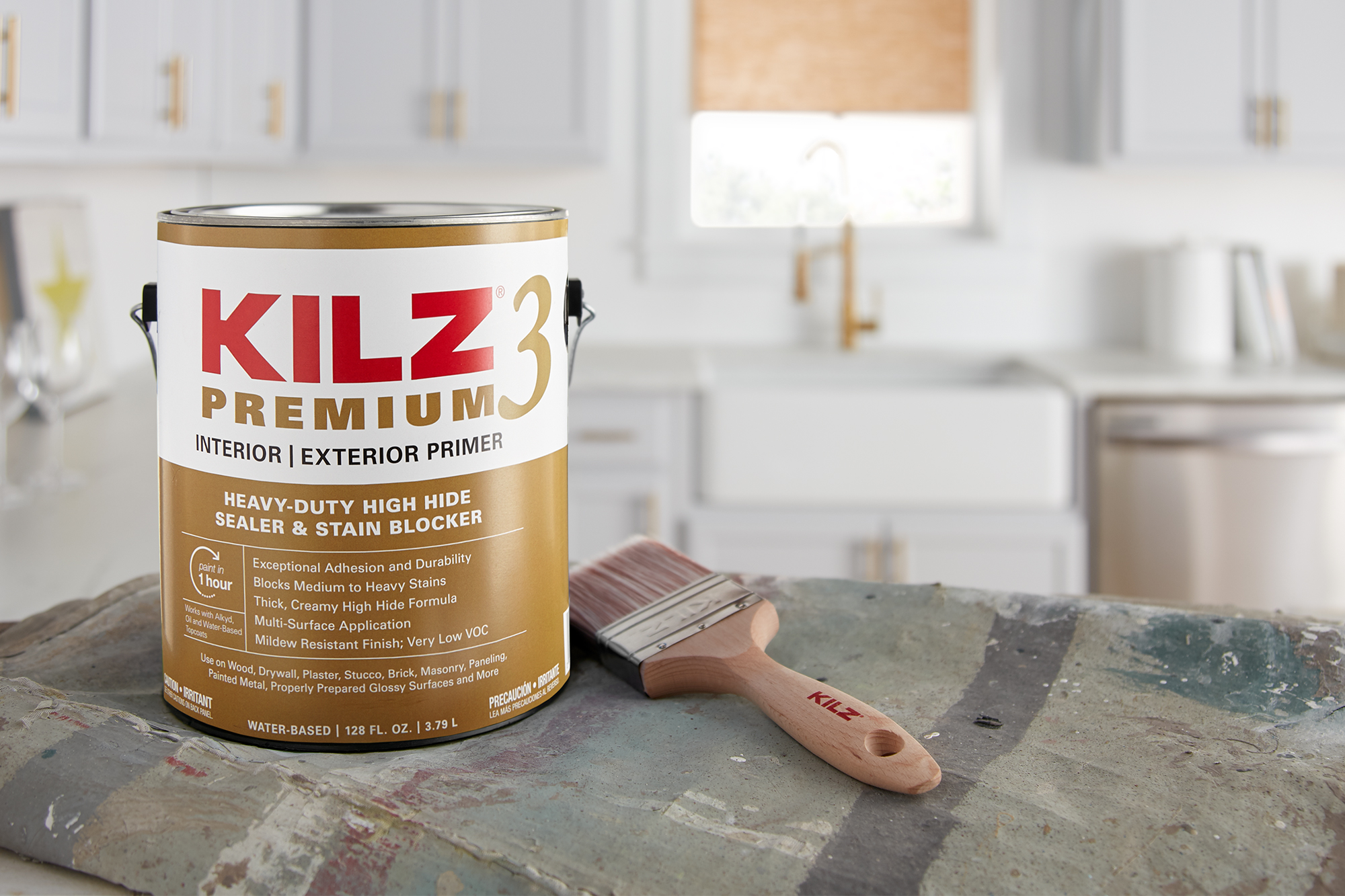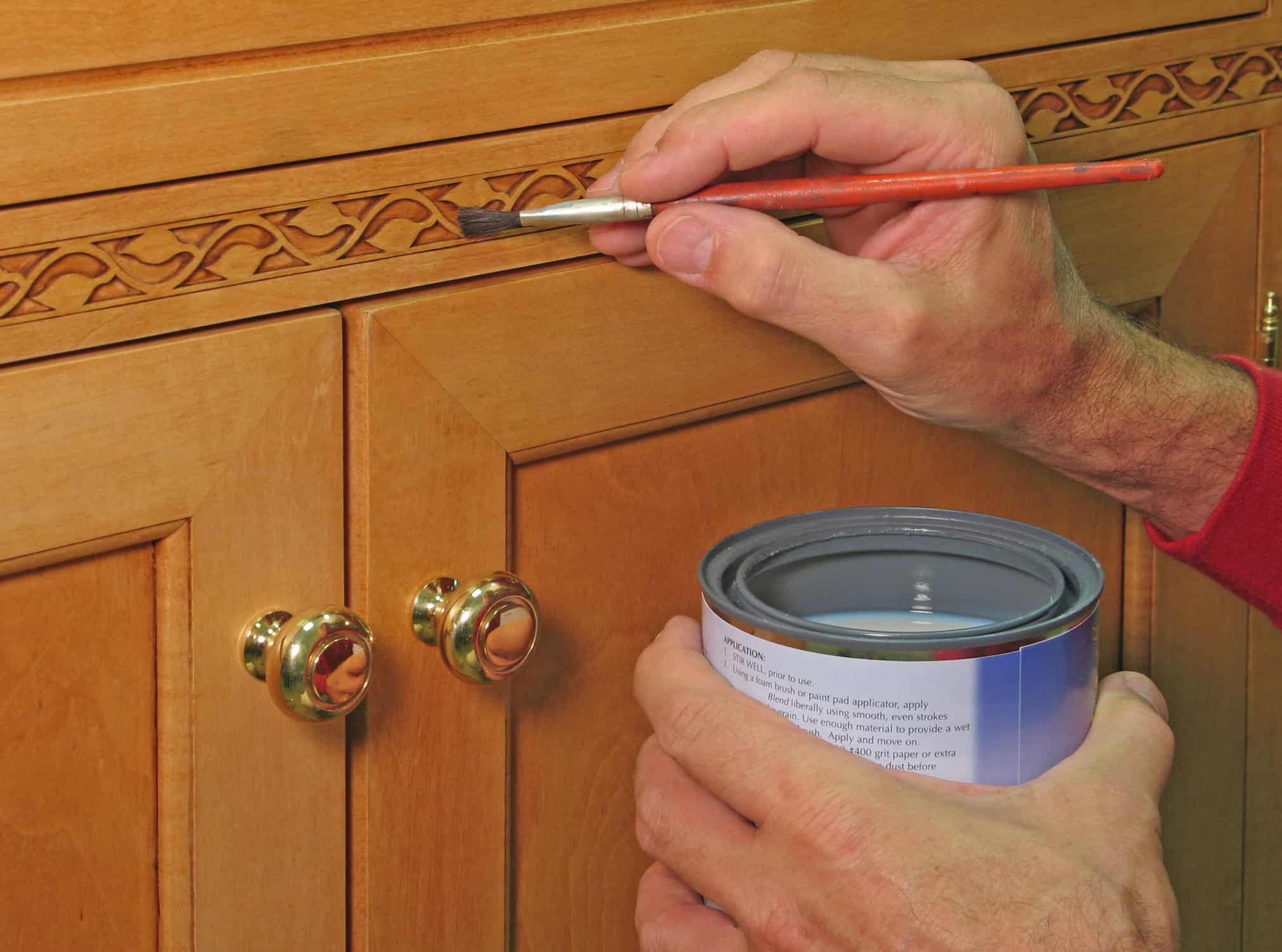Understanding Paint Primer for Wood Cabinets

Paint primer plays a crucial role in achieving a smooth, durable, and long-lasting paint finish on wood cabinets. It acts as a bonding agent between the raw wood surface and the top coat of paint, ensuring proper adhesion and preventing paint from chipping or peeling.
The Purpose of Paint Primer for Wood Cabinets
Paint primer serves as a foundational layer that prepares the wood surface for painting. It addresses various issues that can affect the final paint finish, including:
- Sealing the surface: Primer fills in pores and imperfections on the wood surface, creating a smooth and even base for paint application. This helps prevent paint from sinking into the wood and creating an uneven appearance.
- Enhancing adhesion: Primer acts as a bonding agent, improving the adhesion of paint to the wood surface. This is particularly important for woods with a naturally slick or porous surface, such as pine or oak.
- Blocking stains and odors: Primer helps seal in stains and odors from the wood, preventing them from bleeding through the paint and affecting the final color. This is especially useful for cabinets made from knotty pine or other woods prone to staining.
- Providing a uniform base: Primer creates a consistent surface color, ensuring that the top coat of paint applies evenly and produces a uniform finish. This is important for achieving a professional-looking result.
Benefits of Using Paint Primer on Wood Cabinets
Using paint primer on wood cabinets offers numerous benefits, including:
- Improved adhesion: Primer enhances the bond between the paint and the wood surface, preventing paint from peeling or chipping. This contributes to a longer-lasting paint finish.
- Smoother finish: Primer fills in pores and imperfections on the wood surface, creating a smooth and even base for paint application. This results in a more professional and polished look.
- Reduced paint consumption: Primer helps paint spread more evenly and cover the surface more effectively, reducing the amount of paint needed for a complete coat.
- Protection against stains and odors: Primer helps seal in stains and odors from the wood, preventing them from affecting the final paint finish. This ensures a clean and fresh appearance.
- Enhanced durability: Primer provides a protective barrier that helps shield the wood surface from damage and wear. This extends the lifespan of the paint finish and maintains the beauty of the cabinets for years to come.
Types of Paint Primers for Wood Cabinets
Various types of paint primers are available for wood cabinets, each with specific characteristics and suitability for different applications. Here are some common types:
- Oil-based primer: Oil-based primers offer excellent adhesion and durability, making them suitable for high-traffic areas and cabinets that experience frequent wear and tear. They are also known for their ability to seal in stains and odors effectively. However, oil-based primers require longer drying times and can release strong fumes during application, making them less desirable for indoor projects.
- Shellac-based primer: Shellac-based primers are known for their ability to block tannins and other stains that can bleed through paint. They also provide excellent adhesion and dry quickly, making them a popular choice for wood cabinets. However, shellac-based primers can be more expensive than other types of primers.
- Acrylic-based primer: Acrylic-based primers are water-based and offer excellent adhesion, durability, and drying times. They are also low in VOCs and odorless, making them suitable for indoor projects. Acrylic-based primers are a versatile choice for most wood cabinets and can be used with various paint types.
- Epoxy-based primer: Epoxy-based primers are known for their exceptional adhesion and durability, making them ideal for surfaces that experience heavy wear and tear. They are also resistant to moisture and chemicals, making them suitable for cabinets in kitchens, bathrooms, and other humid environments. However, epoxy-based primers can be more challenging to apply and require specialized cleaning techniques.
Comparing and Contrasting Primer Characteristics, Paint primer for wood cabinets
| Primer Type | Adhesion | Durability | Drying Time | VOCs | Odor | Suitability for Cabinets |
|---|---|---|---|---|---|---|
| Oil-based | Excellent | Excellent | Long | High | Strong | High-traffic areas, cabinets with heavy wear and tear |
| Shellac-based | Excellent | Good | Fast | Low | Mild | Cabinets prone to staining, quick drying applications |
| Acrylic-based | Excellent | Good | Fast | Low | Odorless | Most wood cabinets, indoor projects |
| Epoxy-based | Exceptional | Excellent | Moderate | Moderate | Moderate | High-moisture areas, cabinets with heavy wear and tear |
Preparing Wood Cabinets for Priming

Paint primer for wood cabinets – Properly preparing your wood cabinets before priming is crucial for a smooth and long-lasting finish. It involves removing dirt, grease, and old coatings, smoothing out imperfections, and creating a surface that the primer can adhere to. This process ensures a professional-looking result and prevents future issues like peeling or cracking.
Cleaning Wood Cabinets
Before you start sanding, you need to clean your cabinets thoroughly to remove any dirt, grease, or grime. This will ensure that the primer adheres properly to the surface.
- Use a mild detergent and warm water to clean the cabinets. You can use a sponge or a soft cloth to apply the cleaning solution.
- Avoid using harsh chemicals or abrasive cleaners, as these can damage the wood.
- Rinse the cabinets thoroughly with clean water and dry them completely with a soft cloth.
Sanding Wood Cabinets
Sanding is essential for creating a smooth surface that the primer can adhere to. It also helps to remove any imperfections, such as scratches or dents. Here’s a guide on choosing the right sanding grit:
- Rough sanding (80-120 grit): This grit is used to remove old paint or varnish, and to smooth out major imperfections.
- Medium sanding (150-220 grit): This grit is used to remove scratches and imperfections left by the rough sanding, and to prepare the surface for priming.
- Fine sanding (220-400 grit): This grit is used to create a smooth, even finish and to remove any sanding marks left by the previous grits.
Filling Imperfections
After sanding, you may need to fill any remaining imperfections, such as nail holes, scratches, or dents. This will create a smooth, even surface for priming.
- Wood filler: This is a paste-like material that is used to fill small imperfections, such as nail holes and scratches. It comes in different colors to match the wood.
- Spackle: This is a paste-like material that is used to fill larger imperfections, such as dents and gouges. It is typically used on drywall, but can also be used on wood.
- Epoxy: This is a strong adhesive that can be used to fill large imperfections and to repair damaged wood. It is available in different colors and can be sanded smooth after it dries.
Tools and Materials for Preparing Wood Cabinets for Priming
| Tool/Material | Description |
|---|---|
| Cleaning solution | Mild detergent and warm water |
| Sponge or soft cloth | For applying cleaning solution |
| Sandpaper | Assorted grits (80-400) |
| Sanding block | For sanding flat surfaces |
| Palm sander | For sanding larger areas |
| Wood filler or spackle | For filling imperfections |
| Putty knife | For applying wood filler or spackle |
| Paint scraper | For removing old paint or varnish |
| Dust mask | To protect yourself from dust |
| Safety glasses | To protect your eyes from dust and debris |
Applying Paint Primer to Wood Cabinets: Paint Primer For Wood Cabinets

Applying paint primer to wood cabinets is a crucial step in the painting process, ensuring a smooth, even finish and optimal adhesion of the top coat. Using the correct techniques and materials ensures a professional-looking outcome.
Primer Application Techniques
The application method chosen depends on the size and complexity of the cabinets and the desired finish.
- Brush Application: This technique is ideal for detailed areas and intricate carvings. Use a high-quality brush with natural bristles for optimal coverage. Apply thin, even coats, avoiding excessive pressure. Allow each coat to dry completely before applying the next.
- Roller Application: For large, flat surfaces, a roller is the most efficient method. Choose a roller with a nap length suitable for the surface texture. Apply even coats, rolling in a “W” pattern to ensure complete coverage. Avoid excessive pressure to prevent roller marks.
- Spray Application: Spray application offers the fastest and most even coverage, particularly for cabinets with intricate details. Use a high-quality spray gun with adjustable settings for optimal control. Ensure proper ventilation and wear a respirator mask for safety.
Importance of Proper Primer Application Techniques
Correct primer application techniques are essential for achieving a durable and aesthetically pleasing finish.
- Adhesion: Proper primer application creates a strong bond between the primer and the wood surface, preventing peeling or chipping of the paint.
- Coverage: Even coats of primer ensure that the top coat adheres evenly and hides imperfections in the wood surface.
- Smooth Finish: Applying primer with the correct techniques creates a smooth, even surface, preventing brushstrokes or roller marks from showing through the top coat.
Primer Drying Time and Ventilation
Primer drying time varies depending on the type of primer used and environmental conditions.
- Drying Time: Oil-based primers typically take longer to dry than water-based primers. Check the manufacturer’s instructions for specific drying times.
- Ventilation: Proper ventilation is crucial during the drying process. Open windows and doors to allow fresh air circulation. Avoid painting in areas with direct sunlight or high humidity, as these conditions can slow down drying time.
Step-by-Step Guide for Applying Primer to Wood Cabinets
This guide Artikels the steps for applying primer to wood cabinets:
- Prepare the Cabinets: Clean the cabinets thoroughly with a degreaser to remove any dirt, grease, or grime. Sand the surface with fine-grit sandpaper to create a smooth, even surface for the primer to adhere to.
- Apply Primer: Using the chosen application method (brush, roller, or spray), apply thin, even coats of primer to the cabinets. Work in sections, ensuring complete coverage. Avoid excessive pressure to prevent streaks or roller marks.
- Allow Primer to Dry: Allow the primer to dry completely according to the manufacturer’s instructions. This usually takes several hours. Avoid touching or handling the cabinets during the drying process.
- Sand Primer: After the primer has dried, lightly sand the surface with fine-grit sandpaper to create a smooth, even surface for the top coat. Remove any dust or debris before proceeding to the next step.
- Apply Top Coat: Once the primer is dry and sanded, apply the chosen top coat. Use the same application technique as the primer. Allow each coat to dry completely before applying the next.
So you’re thinking about painting your kitchen cabinets, huh? That’s a big project, but it can totally transform your space. Don’t forget about primer! It’s super important for getting that smooth, even finish. Speaking of smooth, if you’re looking for a new place to live, maybe check out one bedroom apartments in Union City, CA.
They might have some great kitchens with cabinets that are already primed and ready to go! But back to your project, make sure you pick a primer that’s designed for wood cabinets. It’ll make a world of difference in the end.